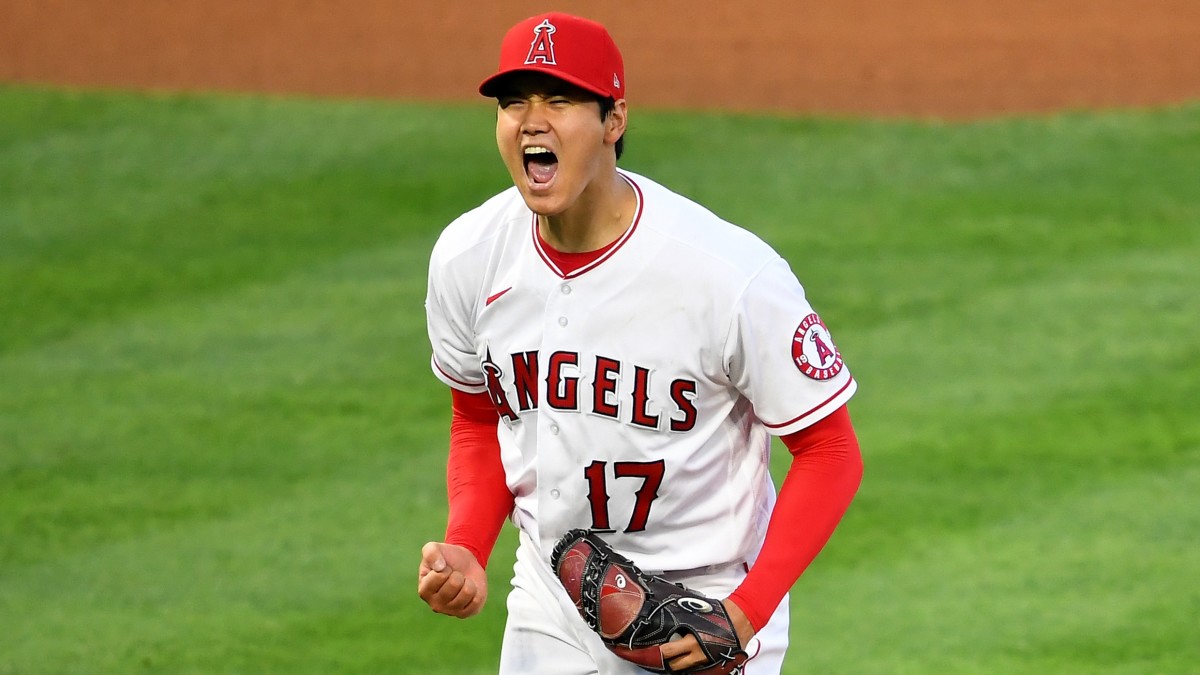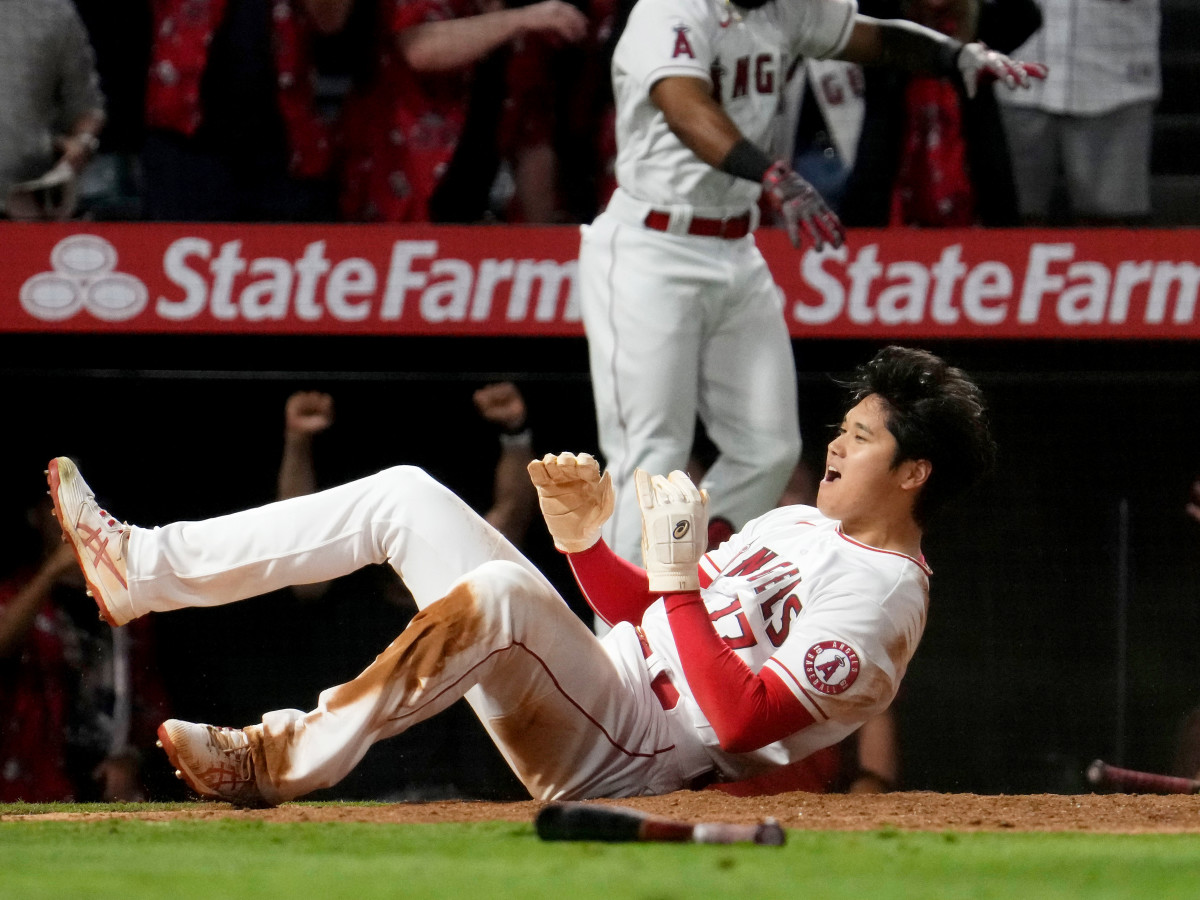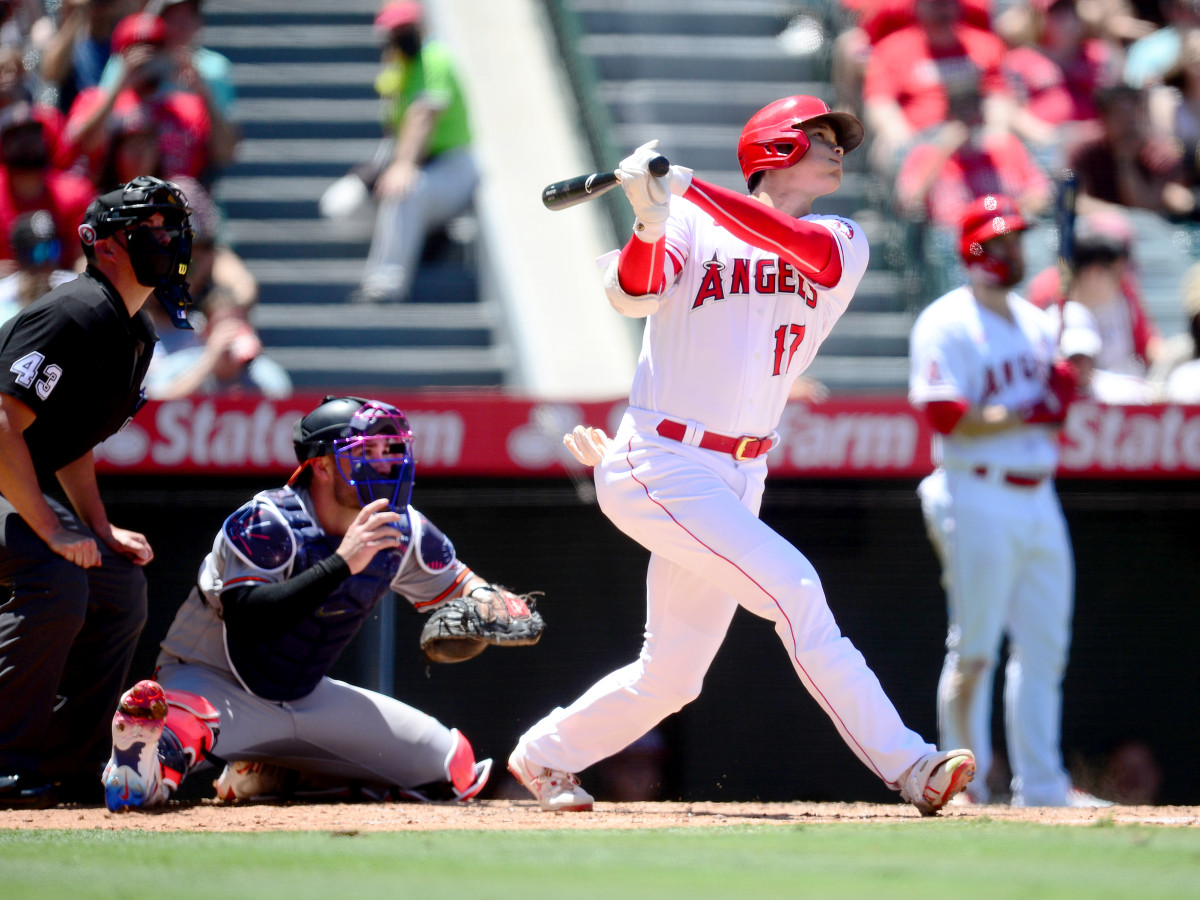Shohei Ohtani Isn't Babe Ruth—He's Better

Welcome to The Opener, where every weekday morning you’ll get a fresh, topical column to start your day from one of SI.com’s MLB writers.
This has been a trying baseball year. The news feed streams headlines about sticky substances, Trevor Bauer, Marcell Ozuna, Jared Porter, Mickey Callaway, Roberto Alomar, an expiring labor deal, the slowest games ever (3:08 average to play nine innings), the most strikeouts ever, and the fewest hits since the DH was added in 1973.
As disheartening as the mire can be, this year also gifts us the wonder that is Shohei Ohtani. He is a once-in-a-century player in a year when we need to be awed, inspired and distracted. He is a ballplayer in the most fundamental sense of the word. Shunning specialization in a society that craves and rewards it, Ohtani pitches, hits and runs, and does all of it with the irrepressible joy and purpose of a Little Leaguer.

A coronation is scheduled for next week. The most amazing baseball player of our lifetime will be crowned as such. Ohtani will take part in the All-Star Home Run Derby next Monday and—if baseball has any sense of justice and theatre—he will pitch and hit in the All-Star Game the following day. He is the first player ever to be selected as an All-Star hitter and pitcher. He will be the star of stars. This is his time.
What Ohtani is doing deserves such a showcase because his baseball genius for the Los Angeles Angels has otherwise been underappreciated. Babe Ruth, his closest comp, was a true two-way player only for a 218-game window in 1918 and 1919—and not even the Babe slugged or ran like Ohtani while doing so. This is not like what Samuel Johnson once said about a dog walking on its hind legs: “It is not done well, but you are surprised that it is done at all.” No, this two-way show is more like a dog dancing the role of Princess Odette in Swan Lake.
Ruth quit the two-way business after just those 218 games, telling reporters while golfing in Los Angeles after the 1919 season, “The outfield is where I belong. It is too hard on the arm to play every day and then take your turn in the box. I found that I was never effective that way.”
Those who suggest Ohtani is compromising his greatness by not specializing—“He can be another deGrom!” “He can be another Yelich”—are missing the point of why he came to the major leagues and what is in his heart.
“I sat in the room with him,” says Angels manager Joe Maddon, then with the Cubs when Ohtani was a restricted international free agent after the 2017 season. “He made it clear he was coming here because he wants to pitch and hit. This is what he loves. He loves baseball and he loves the challenge. I will submit to you that by doing both you are seeing the best version of Shohei Ohtani, not by limiting him.”

For 500 years people have gazed at the ceiling of the Sistine Chapel in absolute wonder. A bevy of scientists also looked at it with image analysis software and saw embedded in Michelangelo’s brushstrokes a spatial relationship known as the golden ratio. Likewise, the aesthetics of Ohtani are best appreciated in person—especially in Denver next week—and without too much thinking, let alone math. But because this is baseball, a community in which numbers are its lingua franca, Ohtani also deserves a statistical appreciation of his uniqueness:
• If you had to distill the amazement of Ohtani to one sentence, it would be this: he hits the ball harder than Juan Soto (92.5–92.3 mph exit velocity), throws harder than Yu Darvish (95.4–94.8 mph), and runs faster than Randy Arozarena (28.9 -28.7 sprint speed).
• He leads the major leagues in home runs and bunt hits. (He is 4-for-4 when bunting for a hit, an unmatched success rate.)
• Until this year, no player (and we’re looking at you, Babe) ever hit 30 homers and made 10 starts on the mound in the same year. Ohtani did it in just 81 games.
• He is the first AL player ever with 31 homers and 12 stolen bases by the All-Star break.
• Roll this around your head: the major league home run leader also throws the toughest pitch to hit in baseball. Batters are hitting .083 against his splitter, which ties Tyler Glasnow’s curveball for the lowest batting average on any pitch that ended at least 70 at bats. Ohtani has thrown 389 splitters in his career and allowed only nine hits and an .069 batting average on the pitch. No batter has ever hit a home run off the Ohtani splitter.
• After 347 career games of hitting and pitching, Ohtani has a higher slugging percentage than Ruth did at the same point (.552–.541).

• Ohtani is slugging .674 against lefties. Only three left-handed hitters ever slugged that high against lefties in a full season: Stan Musial (twice), Ruth and Lou Gehrig (min. 200 PA).
• Ohtani has thrown almost as many fastballs (515) as he has seen as a hitter (548). He has hit five times as many extra-base hits off fastballs as he has allowed, 25–5.
• Ohtani is hitting like Willie Mays and pitching like Roger Clemens at the same point in their careers:
First 332 Games Hitting
HR | RBI | SLG | |
|---|---|---|---|
Willie Mays | 72 | 218 | .565 |
Shohei Ohtani | 77 | 213 | .552 |
First 24 Games Pitching
W-L | ERA | SO | |
|---|---|---|---|
Roger Clemens | 10-6 | 4.23 | 143 |
Shohei Ohtani | 7-4 | 3.97 | 149 |
The Baserunning Myth
“Baserunning is worse than ever.”
“Guys get rushed to the majors without learning how to run the bases.”
“Players today don’t work on baserunning the way players used to.”
You might have heard such “analysis” so frequently that you probably believe it to be true. There is one problem with this analysis: it’s not true.
The research team at MLB Network looked at baserunning statistics over the past 50 years to answer this question: Do players today get thrown out on the bases more than they used to?
They looked at how many runners reached base on a yearly basis (not including home runs) and how many of them were thrown out. The result was shocking to those in the “baserunning today is terrible camp.”
Players today get thrown out on the bases at the lowest rate in the past 50 years! The exact opposite is true.
Only 2.63% of runners get thrown out on the bases. Ten years ago, it was 3.16%. Twenty years ago, it was 3.22%. Thirty years ago, 3.34%. Forty years ago, 3.87%. And 50 years ago, 3.72%.
It’s not even close. Runners have vastly improved at not getting thrown out on the bases.
So the next time you hear someone rant about how bad baserunning is, realize that their opinion is formed by the ubiquity of highlights. Every rare baserunning mistake is highlighted and noted with a shake of the head, making it seem as if it happens more frequently. The “bad baserunning” trope is not supported by the facts.
When Hitting Is Hardest
In a typical 2021 game on Saturday in Cleveland, Houston and Cleveland combined to use six relievers to get the 18 outs in innings seven through nine. Offense came to a standstill. Batters managed one hit in 20 at bats against the late-inning relievers—and only five balls in play out of 93 pitches over about 70 minutes.
Every reliever threw with elite velocity and a wipeout breaking pitch (splitter, slider or curveball): Nick Sandlin, James Karinchak and Phil Maton for Cleveland, Ryne Stanek, Cristian Javier and Ryan Pressly for Houston. They averaged 95.8 mph with their fastballs.
This game was typical. It has never been more difficult to hit in the late innings of a baseball game than it is now. Never. By a lot. Here’s the data:
Lowest MLB Batting Average, Innings 7-9
Year | AVG | |
|---|---|---|
1. | 2021 | .228 |
2. | 2020 | .232 |
3. | 1968 | .239 |
4. | 2014 | .241 |
T5. | 2012 | .242 |
T5. | 2013 | .242 |
T7. | 1967 | .243 |
T7. | 2011 | .243 |
T7. | 2015 | .243 |
T7. | 2017 | .243 |
T7. | 2018 | .243 |
Some observations:
• The lack of late offense is accelerating. Batting average in the late innings is down 16 points in just two years. (It was .244 in 2019).
• Nine of the 11 all-time worst late-inning batting averages have occurred since 2011.
• One of out every four plate appearances in innings seven through nine is a strikeout (25%). More than one of every three turns at bat in the late innings is a strikeout or walk (34.5%).
• Through Saturday there were 2,337 more strikeouts than hits this season; 57% of that gap accrues in innings seven through nine.
• The average fastball velocity is 93.2 mph through the first six innings, and 94.1 mph from the seventh through ninth.
More From Tom Verducci:
• The Charmed Season: Revisiting Derek Jeter’s Origin Story
• Tragedy and Hope: A Prospect, a Scout and a Pop Fly
• Sticky Stuff Enforcement Is Already Making Baseball a Better, Fairer Game
• Odd-Year Magic? Why the Giants Are for Real
